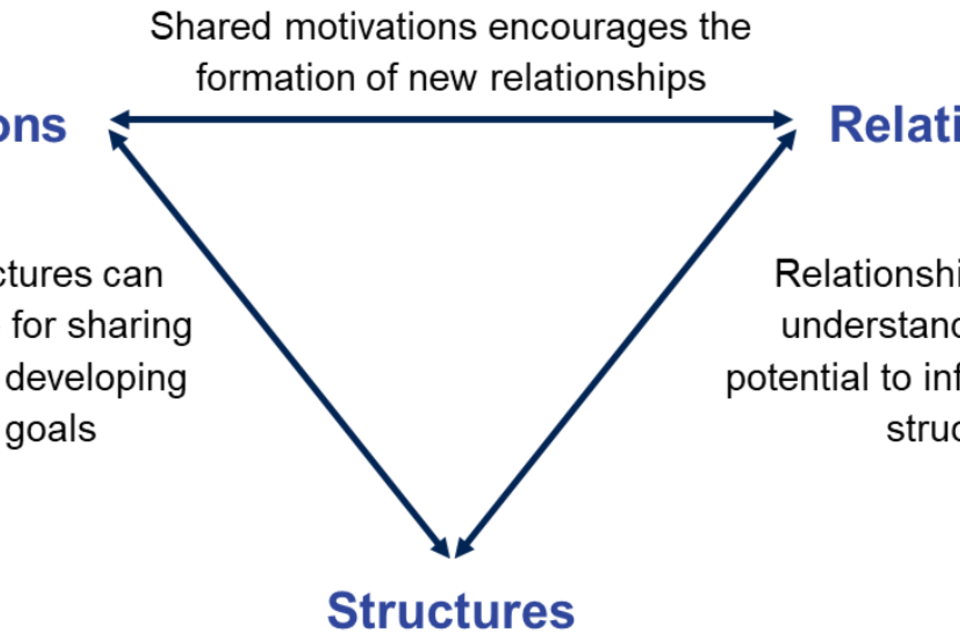Collaboration case study executive summary: summary
Updated 10 November 2022
You can read the full collaboration case study executive summary on this page. The National Leadership Centre’s work is now a part of the Leadership College for Government’s curriculum.
Effective collaboration is built upon a combination of factors relating to motivations, structures and relationships. These factors can act as both challenges and enablers to collaboration, interacting and overlapping in diverse ways depending on the situation and individuals involved. Figure 2 illustrates some of the ways these factors interact to enable collaboration.

Shared motivations encourage the formation of new relationships. Exiting structures can create a space for sharing motivations of developing common goals. Relationships can build understanding and the potential to influence existing structures.
1. Table 2: Summary of challenges and enablers
| Challenges for collaboration | Enablers of collaboration | |
|---|---|---|
| Motivations | Competing priorities. Difficult to align goals. Lack of ownership or buy-in. Focusing on processes. General risk-aversion. | Clear, shared purpose. Buy-in from all organisational levels and collaborators. Listening to and gathering data from all stakeholders. Focusing on outcomes. |
| Structures | Organisational hierarchies. Siloed funding streams and competition. Variation in funding periods. Limits on the flexibility to innovate. Excessive or complicated internal systems and bureaucracies. | Existing cross-sector structures. Local ownership and clear responsibilities. Balance in the scale of regional autonomy. Dedicated, flexible funding. Streamlining or flattening decision-making structures. |
| Relationships | Building new relationships. Lack of awareness of what others have to offer. Geographical and physical distance. Managing relationships under new circumstances. Evaluating staff wellbeing while in crisis mode. | Strong pre-existing relationships. Breaking down physical barriers. Maintaining open, frequent communication. Adopting facilitative styles of leadership. Being solutions-focused. |
